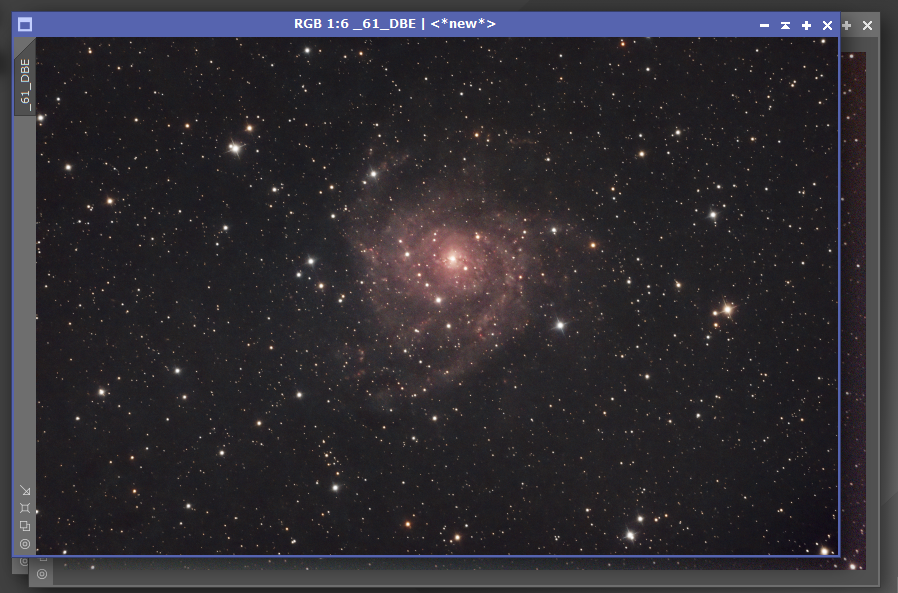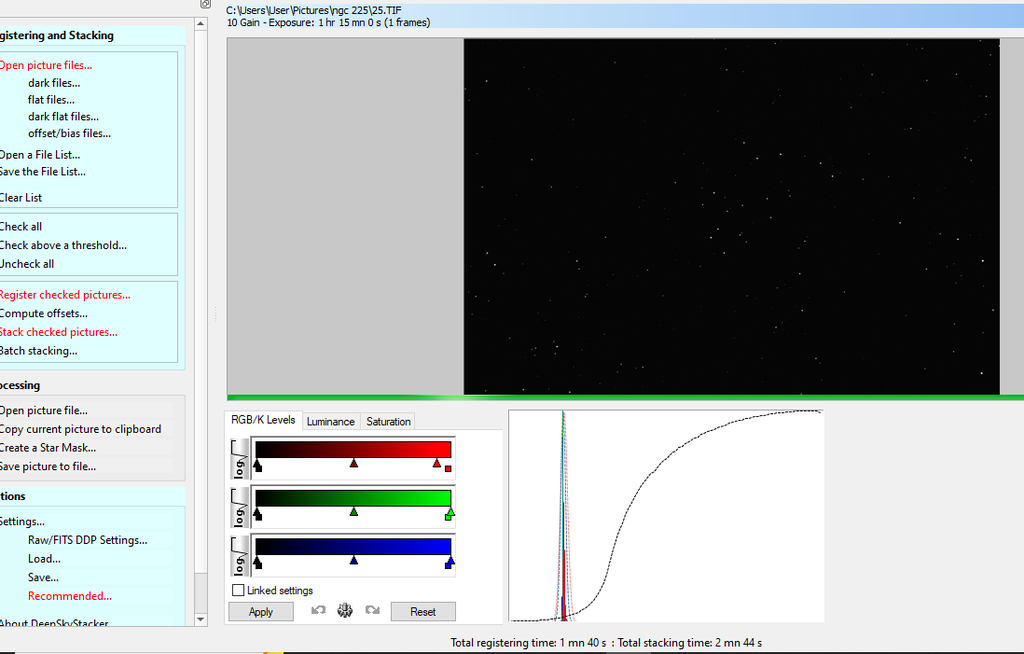Alan Hancox:
Hi Rick
Here is the 61 frame stack. As you can see there are a few issues with the background. I`m using sky flats in NINA with a target of 26-29K ADUs. I`m not sure if my chip is just too dirty?


Any ideas?
HI Alan, It looked like from what you sent that you did do dark flats and darks? Make sure that the flats and dark flats have all the same settings, gain, exposure time, temperature, etc. And like-wise that the lights and darks have all the same settings, including temperature. It is best to have the same gain for flats as for lights--of course this means exposure will be different. But cameras respond very differently with gain, there are non-linear things that go on, while exposure is very linear, so makes less difference. Good if the flats and lights also are at the same temperature, as temperature effects are non-linear.
To set the adu target, I look at the histogram. Depending on the light source and camera and filters, the peaks for different colors are generally quite different. Generally for me the green peak is to the right, blue in the middle, and red toward the left. What you need to ensure is that the peak to the right, generally green, is not clipped on the right, and the lowest peak is not clipped on the bottom end on the left. In fact, keep all peaks right down to the baseline between about 15 or 20% to 80 to 85% of full well, to ensure you are in a nice linear region. Don't worry about where the average luminance is, it is only important that all signals stay away from the edges. I use Sharpcap to see acquire and do the histograms, I presume NINA can also do the full color histogram.
The other possibility is that the dust donuts are moving around a bit. This could be because focus or something got shifted slightly in your optical train. For example if you take your sky flats in the evening, then take images that night, the temperature change can move the focus in your scope, this can shift the donuts a bit. This time of year for me here near Toronto is bad for this, can be 25 C during the day and 8 late at night. Or that the donuts just moved a little on its own, for example the vibrations from moving the telescope if it is a mobile setup. Those are the worst, you get these creepers that move constantly--best is to try to clean everything off when that happens.
Let me share how I monitor and do my flats. I have a simple artist's light panel for tracing. Mine is A3 size for my C925. Less than $50 when I got it on Amazon, smaller sizes are cheaper. It doesn't need to be super uniform as I put in on top of my dew shield where it is way out of focus. The advantage to this is I can run flats anytime. My camera is cooled so temperature of the camera is always the same. So this way I can do flats after my telescope is equilibrated and focussed for the night. Takes only 2 to 3 minutes to do 50 flats. Then, during the night, I setup DSS and actually run it with my flats and darks. I continue to look at new subs during the night. This way I can check my FWHM, stars, scores, what the images look like, background continually. It has happened that a dust bunny suddenly moved during the night. I immediately ran a new set of flats, then continued imaging. Nothing worse that looking at the images in the morning to see a huge dust bunny in half your frames. One might get away with running a new set of flats the next day, but a moving bunny can move again. Anyway, after a long night out I hate a nasty surprise the next day, this eliminates that issue.
So if you have not taken apart your setup you could try a new set of flats. Again, the donuts may have moved during the night, it sometimes can be a pain to find out which frames are okay with the old flats, and which are better with the new flats.
Hope all this helps.
Rick







